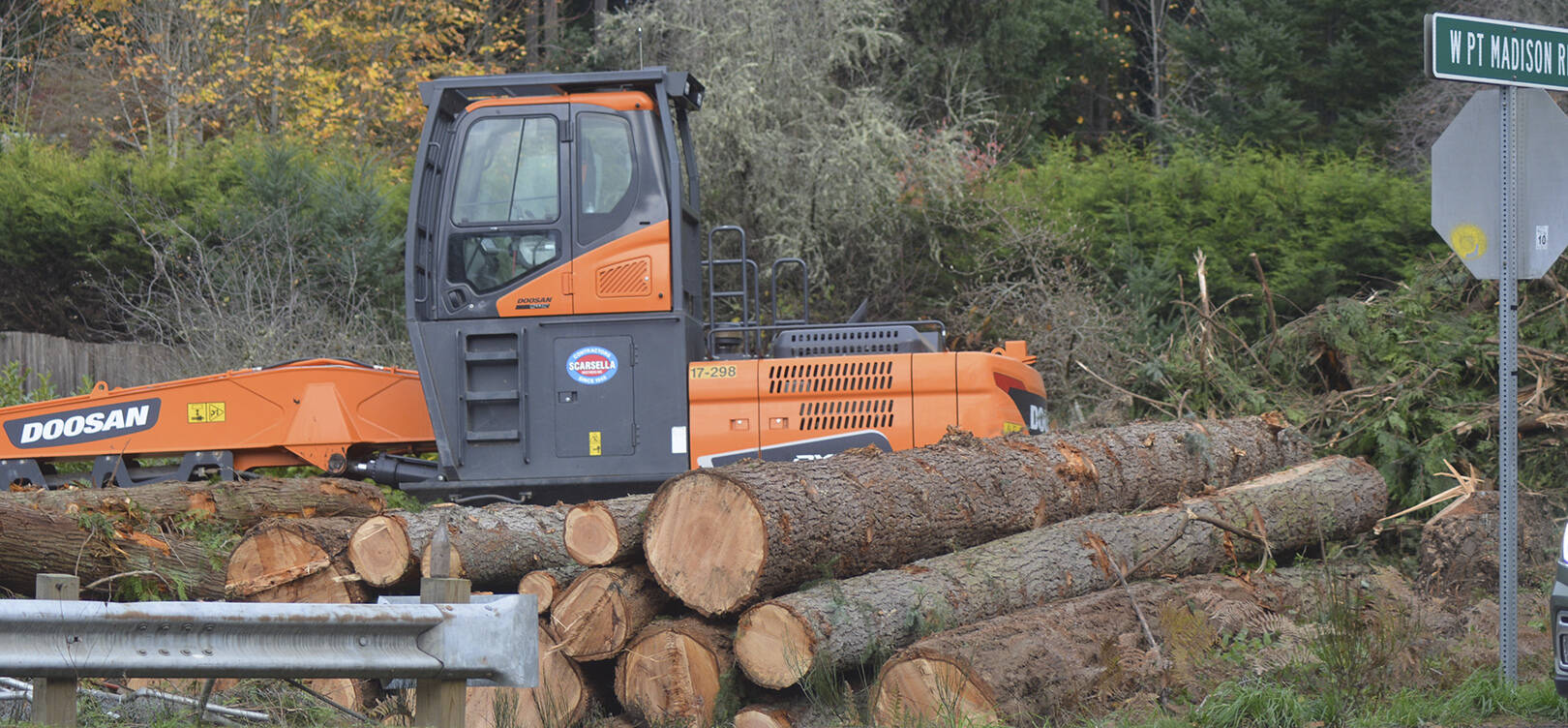Trees are being removed for a roundabout being constructed just south of Agate Bridge on Highway 305 on Bainbridge Island.
A state Department of Transportation news release says contractor crews working on the roundabout is a long-awaited safety improvement project at NE West Port Madison and Seabold roads. The goal is to reduce collisions by eliminating left turns in front of oncoming traffic.
The DOT says lanes will remain open throughout most of the project, but there will be short-term traffic stops during off-peak hours.
Another single-lane roundabout will be built at NE Adas Will Lane. At NE Agatewood Road, motorists headed south on Highway 305 will turn right onto the highway and use the new roundabout to return south.
The goal is to have the projects completed by December of 2024. The cost is $11 million.
DOT communications consultant Mark Krulish didn’t know how many trees are being removed, but said “obviously we will be planting trees when the project is done.”
Krulish also didn’t have any accident information immediately available. But he did say it’s hard to make right-hand turns on many state highways, and even tougher to make left-hand turns with a stoplight or roundabout.
The DOT says roundabouts have a number of safety benefits. Drivers must slow down and yield to traffic before entering, which reduces severity of collisions. They also promote continuous traffic flow because drivers are not required to stop. Also, drivers are no longer tempted to “beat the light,” which can lead to dangerous crashes. The gentle curve of roundabouts also eliminates the possibility of T-bone and head-on collisions, which cause more serious injuries.
People who walk or roll will be able to use the new sidewalks, crosswalks and shared-use paths that are part of the project.
Better safety
Roundabouts reduce fatal crashes 90%, injury crashes 75%, pedestrian collisions 40% and overall collisions 37%. Studies show conversion to roundabouts leads to up to an 89% reduction in delays and 56% reduction in vehicle stops. As for cost, roundabouts cost about the same as traffic signals to build, but they save in hardware, maintenance and electrical costs up to $10,000 a year.
The two roundabouts will be done in five stages.
Stage 1 (90 days): Shift traffic to west side of 305 at Madison and close Seabold. Construct Madison detour and grade east side of 305. Construct Agatewood Road intersection improvements. Construct pond at Adas Will.
Stage 2 (90 days): Shift traffic to 305 detour; shift traffic to Madison detour; shift traffic to east at Adas Will and complete rough construction of roundabout.
Stages 3-5 (90 days): Construct splitter islands and roundabout features; sidewalks; open Seabold; final paving; complete stripings.
Amy Amos of DOT spoke to the BI City Council at a recent meeting.
BI Mayor Brenda Fantroy-Johnson expressed concern about the roundabouts.
“People are very afraid” because there will no longer be a middle lane, she said. They are worried “somebody’s gonna die, and I said, ‘Yea, it might be me,’” as she uses the roads. “I can’t console them.”
Amos replied, “The big issue is speed.” Even though the speed limit has been reduced to 35 mph, “People just simply don’t slow down.”
She added that DOT has tried rumble strips and traffic calming radar, but it’s hard to find a balance. “It’s either too much or too little.” She said what may work at one end of the project can end up creating a problem at the other end. And when there are too many, “People don’t see them anymore.”
Day Road
Separate from the presentation, Councilmember Joe Deets said he is part of a Highway 305 working group, along with fellow Councilmember Leslie Schneider and representatives of the tribes, county and other cities in the county.
He said the group prioritized those two roundabouts, plus one at Day Road. A sticking point on that one was stormwater, but Kitsap Transit has said at its new park and ride there would be a vault for stormwater. He said DOT seemed to be acceptable to that. So the only thing holding that project back now is funding. “With inflation we simply just don’t have the money to do what we need to do there,” he said, adding it’s larger and more expensive than the other two.



